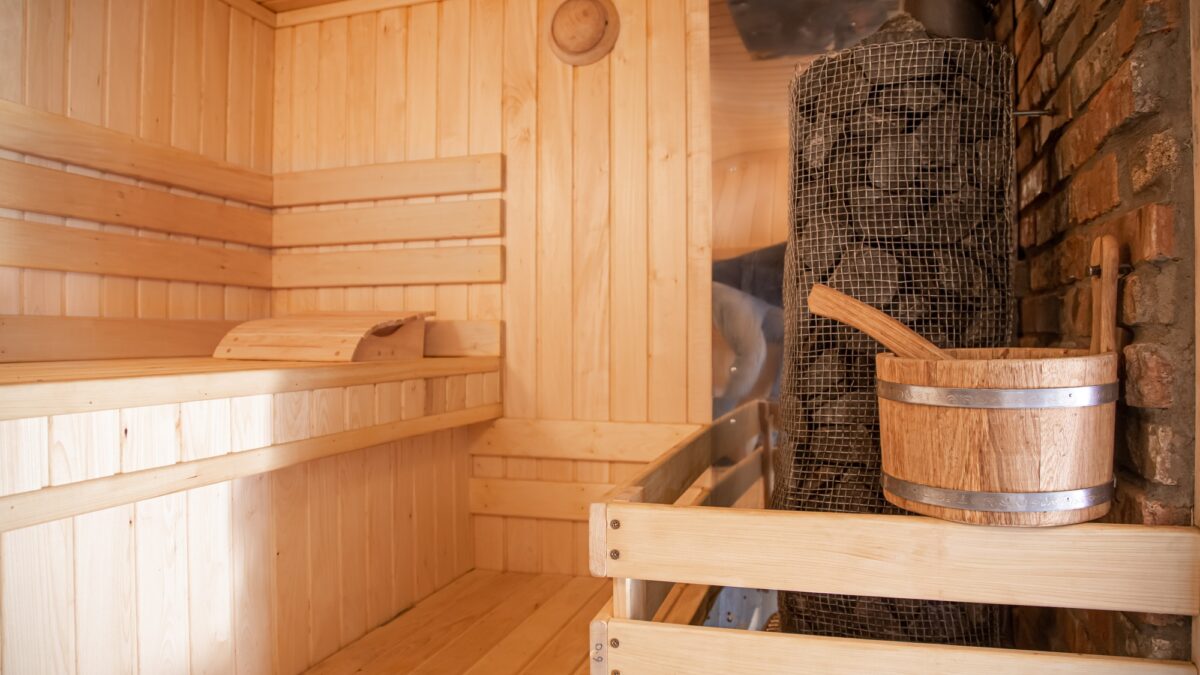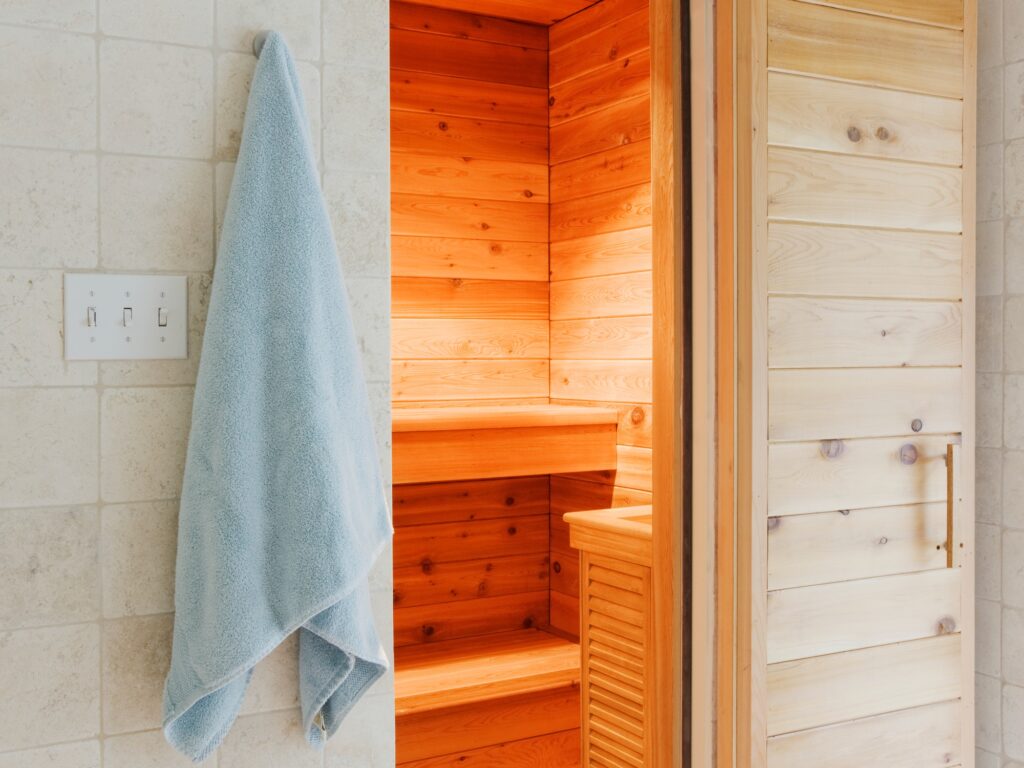Saunas offer numerous health benefits, such as improving circulation, relieving muscle pain and promoting relaxation. They also help eliminate toxins through sweating and reduce stress.
However, choosing the right sauna is essential to get the most out of its benefits. There are different types, such as the traditional sauna and the infrared sauna, each with particular characteristics.
In this blog, we will compare the available options so that you can choose the sauna that best suits your needs.
What is a traditional sauna?
The traditional sauna, also called a wood-fired sauna or Finnish sauna, is a classic method that uses materials such as wood to create a warm and welcoming environment.
This type of sauna is ideal for those seeking dry, intense heat in a space designed for relaxation.
Functioning and heat in traditional saunas
Heat is generated by a wood or electric stove that heats special rocks. These rocks gradually release heat, and when water is poured on them, steam is produced, increasing the humidity. Temperatures usually range from 70°C to 100°C.
Benefits of the traditional sauna vs. the infrared sauna
The traditional sauna is known for its ability to relax the body, relieve muscle tension and improve blood circulation. In addition, it promotes detoxification through intense sweating and contributes to a better night’s rest, thanks to its calming effect.

What is an infrared sauna?
The infrared sauna uses infrared rays to heat the body directly, without the need to heat the air. Unlike the traditional sauna, the heat does not come from hot air, but from a technology that heats the body from within.
Infrared heating operation
In an infrared sauna, the infrared rays penetrate the skin and directly heat the body. At lower temperatures (45°C to 60°C), the heat is gentler, making the experience more comfortable for those who cannot tolerate the extreme heat of traditional saunas.
Benefits of the infrared sauna vs. traditional sauna
Infrared saunas have less humidity and provide greater comfort at lower temperatures.
By directly heating the body, they promote detoxification, improve circulation and are more energy efficient.

Comparison between traditional sauna and infrared sauna
Temperature and heat
The traditional sauna generates more intense heat, reaching temperatures of between 70°C and 100°C, which creates a dry and hot environment.
In contrast, the infrared sauna uses milder temperatures, between 45°C and 60°C, resulting in a more comfortable experience for those who prefer less extreme heat.
Types of heat
The main difference between the two types of sauna is the type of heat.
In the traditional sauna, the heat is dry and quite intense, coming from the hot rocks.
Meanwhile, in the infrared sauna, infrared rays heat the body directly without the need to heat the air, allowing for a more direct and focused experience on the body.
Energy consumption
In terms of energy efficiency, traditional saunas tend to consume more energy as they need to heat the entire space and the air to higher temperatures.
Infrared saunas tend to be more efficient, as they require less energy to reach their target temperature due to infrared ray technology.
Usage time
The recommended time for using each type of sauna also varies.
In the traditional sauna, sessions of 15 to 20 minutes are recommended, due to the high temperature of the environment.
On the other hand, in the infrared sauna, sessions can last between 20 and 30 minutes, as the heat is softer and the body can tolerate a longer period
Which sauna to choose? A guide to making the best decision
Available space
When choosing between a traditional sauna and an infrared sauna, available space is an important factor.
Traditional saunas require more space, as they tend to be larger and must be well ventilated.
On the other hand, infrared saunas are more compact and can be better adapted to small spaces, making them ideal for homes with limited space.
Regular usage
The type of sauna you choose will also depend on how you intend to use it. If you are looking for a sauna for intense relaxation sessions, the traditional sauna may be the ideal option. On the other hand, the infrared sauna is ideal for more frequent and prolonged use, and may be better suited to your daily wellness routine.
Budget
In terms of budget, traditional saunas tend to be more expensive in terms of initial investment and maintenance, due to the technology and materials used.
Infrared saunas have a lower initial cost and can also be more economical in the long term, as they require less maintenance and are more energy efficient.
Personal benefits
Your choice of sauna depends on what you are looking for. If you prefer an intense and deep heat experience, ideal for relaxation and detoxification, the traditional sauna may be the right option.
However, if you are looking for a gentler and more comfortable heat, with the advantage of being able to use it more frequently and without the feeling of suffocation, the infrared sauna is an excellent and more tolerable alternative.


Both the traditional sauna and the infrared sauna have their advantages and unique characteristics.
If you have a large space, the traditional sauna might be the best option. On the other hand, if you have a small space and want a more economical and easy-to-maintain option, the infrared sauna is a fantastic choice..








